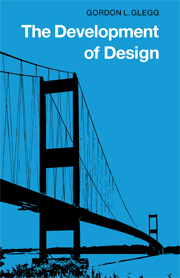3 - The basic idea — combined direct and indirect research
Published online by Cambridge University Press: 07 September 2010
Summary
Possibly the best way to introduce this principle is by considering another imaginary case. You have, for example, a marvellous new idea about how to design a pylon for carrying overhead electricity cables. It involves an ingenious structure built up by welding together elliptically sectioned steel tubes. This being a fairy story, tubes of this type are readily available at a competitive cost.
One of the principal requirements of such a pylon is that it should withstand the combination of a horizontal load, due to the pull on the cable, and a vertical one due to the weight; both without exceeding specified deflection limits.
Well, the proof of the pudding is in its eating, you say, so let's try it out. Full size; then there cannot be any argument. So you sit down to work out in detail how to organise it all. The first thing that may occur to you is that the pylon will have to be mounted on a totally rigid and therefore a very expensive concrete base. You want to learn how much the structure deflects, and not its foundations. And you will need some kind of crane with a carefully calibrated loading device hung up on it, plus all kinds of cables and pulleys. And how about measuring the deflections - do you use surveying techniques, with laser beams, or what?
- Type
- Chapter
- Information
- The Development of Design , pp. 34 - 40Publisher: Cambridge University PressPrint publication year: 1981



